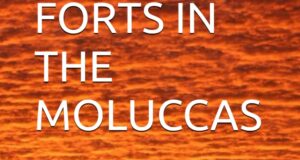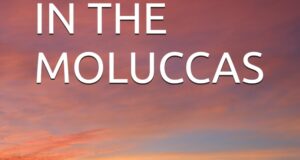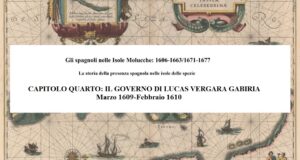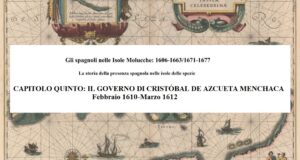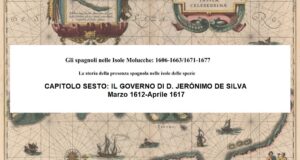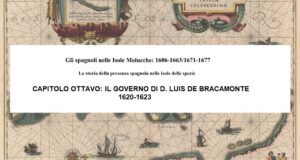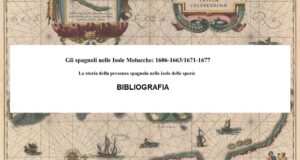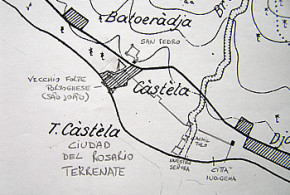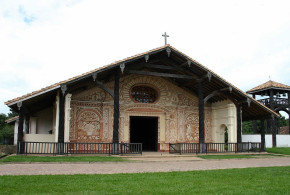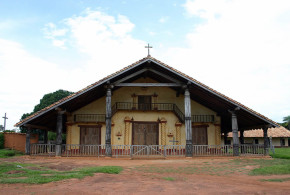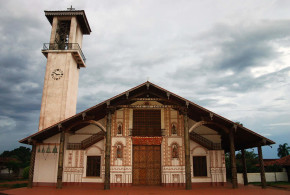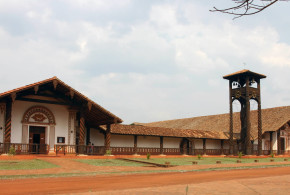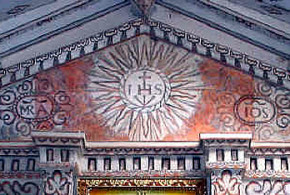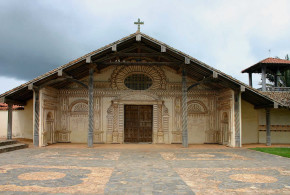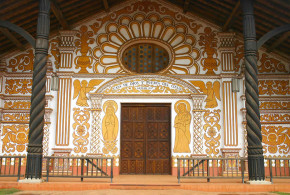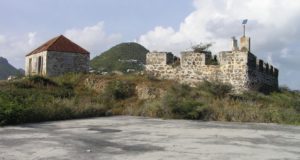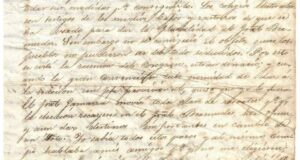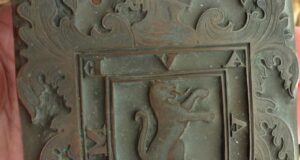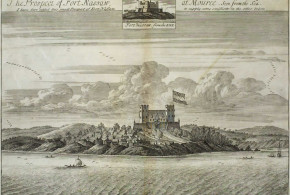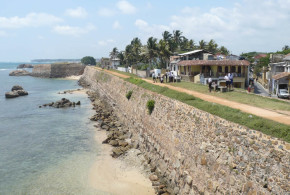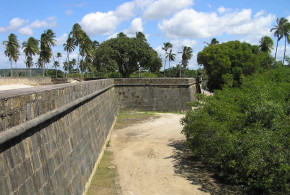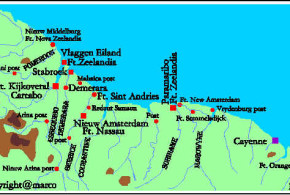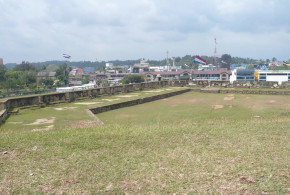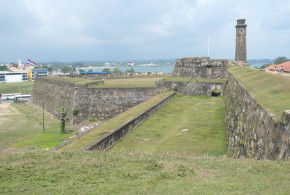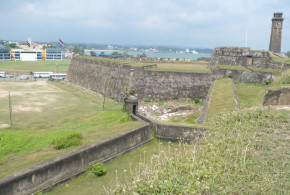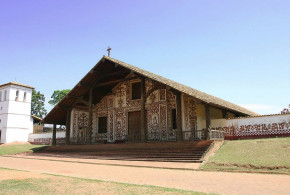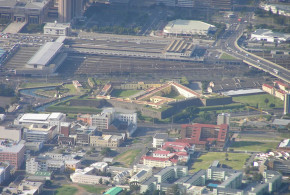This post is also available in:
![]() Italiano
Italiano
Written by Marco Ramerini. English text revision by Dietrich Köster.
English translation of a small part of my work entitled “La presenza Spagnola alle Isole Molucche, 1606-1663”.
In the propositions of the governor of the Philippines, Don Juan de Silva, a big joint expedition of Spaniards and Portuguese should succeed in getting rid of the Dutch forces present in Indonesian islands one time for all. The Dutch feared also such expedition (“Generale Missiven” vol. I pp. 37-38). In 1612 in order to agree with the viceroy of Portuguese India, de Silva had sent to India the former governor of Ternate Cristobal de Azcueta, but the entire expedition disappeared in a shipwreck between Manila and Macau.
The governor of the Philippines did not loose his courage and charged this time 2 Jesuits to reach Goa, father Pedro Gomes, rector of the Company in Ternate and father Juan de Ribera, head of the Manila college. At the end of 1614 ( Ribera left in november 21th Cavite harbour) they went with 2 different fleets to Goa, where they arrived in 1615 without problems . The agreement, which the 2 fathers reached with the viceroy, required the Portuguese to contribute with 4 big galleons, which would be sent to Malacca.
Father Pedro Gomez returned to Manila in July 1615 to inform the governor of the results of the mission and to tell him that the 4 galleons would soon sail to the Philipines. De Silva had prepared a big fleet. In order to obtain the artillery for this expedition he had weakened the defences of the city of Manila with grave risks in case of an attack on the city by the Dutch.
When the Portuquese galleons did not arrive, he thought of going at their encounter. Notwithstanding the negative advice of many of his subordinates he decided to depart in February 1616 to Malacca instead of sailing directly to the Moluccas. It seemed that Jeronimo de Silva had concluded treaties with the inhabitants of the Makian and Moti islands and that upon arrival of the great expedition the islanders would rebel against the Dutch and help the Spaniards. [1]
The governor suffered of bad health. It seemed that the illness manifested itself already for the first time before the departure from Manila. There are testimonies of the fluctuating health of the governor since the first expedition to the Moluccas in 1611. Several times he had already sent petitions to the King to be replaced in his function to be able to return home.
In spite of this the governor of the Philippines sailed from Manila on 9 February 1616 at the head of an important expedition composed of 10 big galleons, 4 galleys, a patach and other minor vessels. The galleons were: the ship of the General-Staff “Salvatore” of 2,000 (volumetric) tons, the flagship “San Marcos” of 1,700 tons, the 2 galleons “San Juan Bautista” and “Espiritu Santo” both of 1,300 tons, further the smaller galleons “San Miguel” (800 tons, “San Felipe” (800 t.) , “Nuestra Señora de Guadalupe” (700 t.), “Santiago” (700 t.), “San Andrés” (500 t.), “San Lorenzo” (400 t.). On this fleet had embarked 5,000 men, both soldiers and sailors, of which less than 2,000 Spaniards, a unit of Japanese infantry and about 300 pieces of artillery. Six Jesuits took also part in the expedition.
The fleet was the mayor armada, which these islands had ever seen. So marvelous that father Colin asked himself , “how was it possible to build such machines in these recently conquered countries populated with Spaniards, the most remote and distant part of the entire monarchy”. The fleet took the direction of the Strait of Malacca with the intention to unite forces with a Portuguese armada and to attack together first of all the Dutch factory on Java and thereafter the Dutch bases on the islands of the Moluccas.
But the Portuguese fleet sent by the viceroy of Goa had already been completely destroyed near Malacca, attacked by Dutch vessels. In order to avoid the capture of the big galleons by the Dutch the Portuguese were forced to burn them.
The Spanish armada entered the Strait of Singapore on February 25th, 1616. From there de Silva sent Juan Gutierrez Paramo to Ternate with a “socorro” (relief fleet) with the new title of sergeant-mayor.[2] Probably Juan de la Umbria was sent to Ternate together with Paramo.[3] The health condition of de Silva deteriorated and on April 19th 1616, the eleventh day of his suffering, he died in the city of Malacca. The whole entreprise ended up in a gigantic fiasco. Nothing had been done against the Dutch and the death of de Silva in Malacca shortly after his arrival. It was the inglorious end of this expedition.
The armada returned to Manila at the beginning of June 1616.[4] Caused by fever and other ilnesses that struck the fleet crews during their stay in Malacca and the Strait of Singapore, a large part of the men of the fleet died and the vessels returned to Manila “sin gente” (without people). [5])
The decision of de Silva to go first to Malacca instead of pointing directly to the Moluccas is a bit strange, considering that according to the treaty the Portuguese galleons should have sailed to the Philippines in order to join the Spanish fleet. Besides this, at the moment of departure of de Silva from Manila the Portuguese fleet should have arrived in time, if they had not been intercepted by the Dutch. Strange enough was that de Silva wanted in any case try to unite his own force with that of the Portuguese, although he had at his command a big and important naval force and the position of the Dutch in the Moluccas was very precarious as various testimonies inform us. “The enemy is meager in this season”. Secondly, Vergara was certain that a large part of the islands would have been captured by the Spaniards, if the Spanish fleet would not have waited and have sailed directly to the Moluccas without passing via Malacca.[5]
The Spanish town of Ternate: Ciudad del Rosario.
The Spanish fortresses on Tidore Island 1521-1663, Moluccas, Indonesia.
NOTES:
[1] Correspondencia””, Jeronimo de Silva, pp. 284-285
[2] AGI: “Confirmación de encomienda de Filipinas. Juan Gutierrez Paramo. 10-03-1625”, Filipinas,48,N.1
[3] AGI: “Confirmación de encomienda de Marinduque, etc. Juan de la Umbria. 02-10-1623”, Filipinas,47,N.60
[4] For further information about this expedition see: (Colin-Pastells “Labor Evangelica” vol. III pp. 581-646)
[5] AGI: “Carta de Lucas de Vergara Gaviria al Rey defensa Maluco. Terrenate, 31 May 1619” Patronato, 47, R. 37
AGI= Archivo General de Indias/ General Archives of the Indies; Sevilla, Spain
This post is also available in:
![]() Italiano
Italiano
 Colonial Voyage The website dedicated to the Colonial History
Colonial Voyage The website dedicated to the Colonial History


